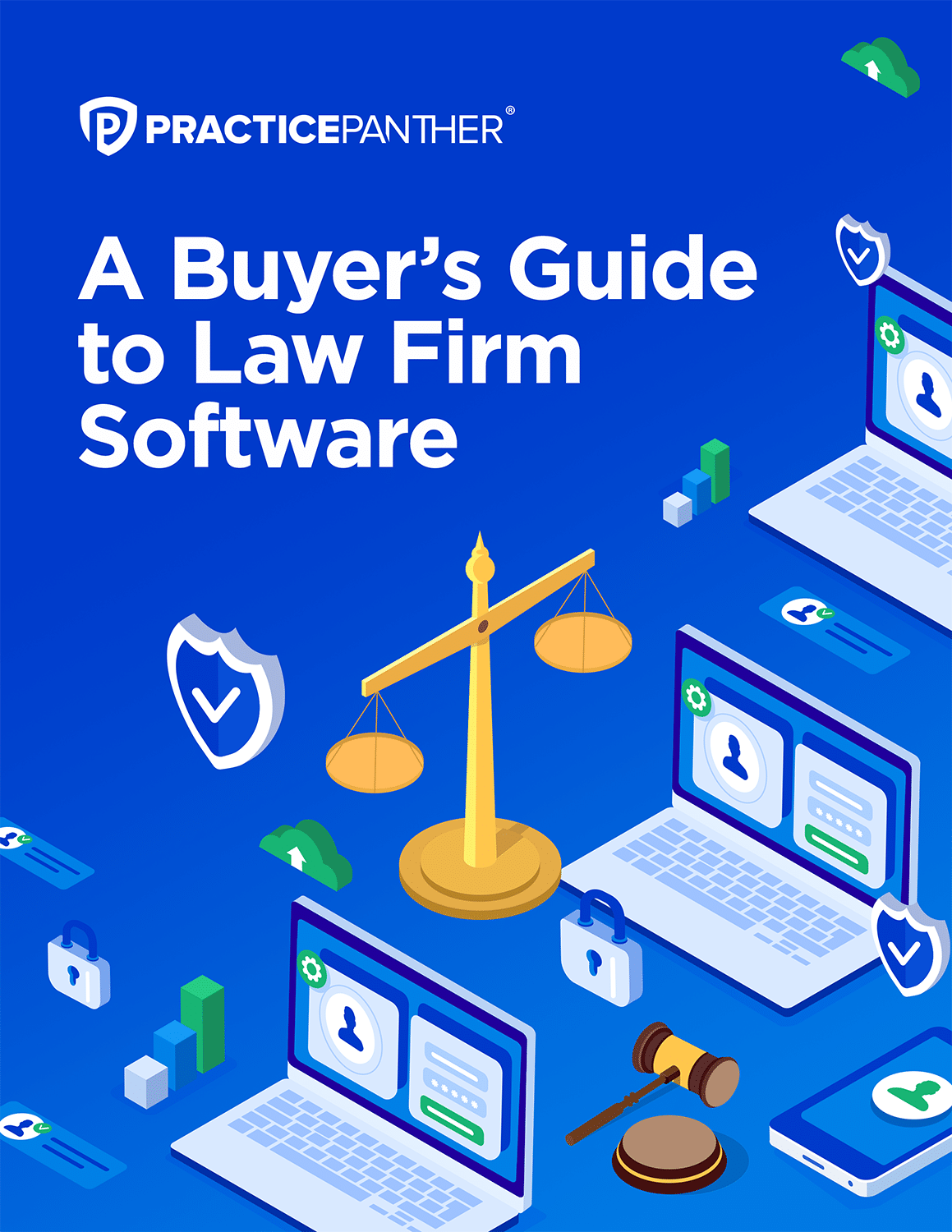Case management, in legal terms, refers to the systematic organization and coordination of legal cases by lawyers or legal professionals. It involves tasks like scheduling court appearances, using legal case management software, preparing court documents, and much more.
It’s important to acknowledge that the intricacies of case management evolve differently across various practice areas and law firms. While civil litigation demands meticulous tracking of court dates and evidentiary documents, corporate law necessitates the efficient handling of contracts and regulatory compliance.
By gaining a deeper understanding of legal case management, you can fine-tune your case management skills, enabling you to dominate your cases both in your firm and the courtroom. This blog will dive into how legal case management holds the intricate legal web together, enabling legal professionals to navigate the practice of law efficiently.

What Is Case Management in Simple Terms?
In simple terms, case management is like a carefully choreographed dance, where each legal task and detail represents a unique dance move. Just as dancers must coordinate their steps and timing to create a captivating performance, case management involves lawyers orchestrating various elements of a legal case. The goal is to ensure that all these components come together seamlessly, resulting in a well-executed legal strategy that leads to a successful resolution, much like a flawless dance routine wowing the audience.
You can also think of case management like this:
- It’s a roadmap: Case management provides a clear path for lawyers to follow throughout a legal case. Just as a roadmap outlines the route to a destination, case management outlines the necessary steps, deadlines, and milestones, helping lawyers navigate the complexities of the legal process effectively.
- It’s an organizational tool: Case management keeps all the elements of a legal case neatly structured. It helps lawyers categorize and manage documents, evidence, and crucial information, ensuring nothing gets lost or overlooked in the legal shuffle.
- It’s an efficiency booster: Case management streamlines processes within a legal case. It allows lawyers to allocate resources effectively, automate routine tasks, set reminders for critical deadlines, and track progress. This efficiency ensures that legal cases move forward smoothly and cost-effectively.
Overall, case management simplifies the complexities of legal practice, making life easier for legal professionals in law firms and in courtrooms. Having established the groundwork for understanding case management, let’s step into the courtroom and examine how it all comes together during case management conferences.
What Is the Purpose of a Case Management Conference?
The purpose of a case management conference is to set a procedural timetable for the case and to discuss any immediate issues or disputes that could affect the trial’s progress. It is sometimes called a “pretrial conference,” “status conference,” or “case management hearing,” depending on the court. This proactive approach helps courts manage their caseloads more efficiently, reducing the chances of unforeseen delays.
How long does a case management conference last? It depends on the type of case and varies significantly by jurisdiction, but it will typically last between 30 minutes to two hours.
Let’s take a look at what a case management conference will look like in criminal court versus civil court.
What Is a Case Management Hearing in Criminal Court?
A case management hearing in criminal court is a procedural gathering where the judge, defense, and prosecution review and discuss the progress of a criminal case, addressing issues like evidence exchange and trial readiness. Common occurrences in criminal case management hearings include:
- Discussing any plea deals or negotiations that have been proposed or are under consideration.
- Setting or revising deadlines for motions, evidence submission, and other pretrial activities.
- Determining the admissibility of evidence, such as police reports or arrest evidence.
- Discussing matters related to the defendant’s right to a speedy trial as defined by criminal law standards.
- Figuring out special security measures or concerns relevant to high-profile criminal cases.
- Addressing the implications of a joint trial if multiple defendants are involved.
The nuances of these hearings will vary from one jurisdiction to another. For example, some courts split this case management hearing into a trial management hearing and a dispositional hearing, the former to discuss scheduling and the latter to discuss plea negotiations.
What Is a Case Management Conference in Civil Court?
A case management conference in civil court is a judicial meeting where parties involved in a civil lawsuit and the judge convene to discuss and plan the case’s progression. A few events that you can expect in a civil case management conference include:
- Establishing a timeline for the exchange of discovery materials, such as documents, depositions, and interrogatories.
- Discussing the possibility and logistics of alternative dispute resolution methods, like arbitration or mediation, to resolve the issue without a trial.
- Identifying any potential legal issues that could affect the outcome of the case, such as jurisdictional questions or matters of law.
- Negotiating and setting deadlines for the submission of motions, like summary judgment motions.
- Determining the need for and scope of injunctive relief, such as temporary restraining orders.
Again, each jurisdiction will have different procedures and rules for civil case management conferences, but the above is what you can generally expect. Now that we understand what case management looks like in court proceedings, let’s consider how you can best manage your cases within your firm.

What Is the Process of Case Management in a Law Firm?
In general, a law firm can follow these case management steps:
- Intake and Assessment: Case management begins with thoroughly evaluating the client’s needs and the case’s merits. You can make this step easier with a client intake form incorporated directly into your website for clients to fill out.
- Case Strategy and Planning: Develop a comprehensive strategy that aligns with the client’s goals and adheres to legal standards. This process might involve brainstorming sessions with senior attorneys to identify the strongest arguments and potential legal challenges.
- Document and Evidence Gathering: Diligently collect and manage all necessary evidence, including obtaining official records, sourcing witness statements, and gathering digital evidence.
- Regular Communication and Collaboration: Maintain ongoing communication with clients and team members, ensuring everyone is aligned and informed. Set regular status meetings, and consider using a client portal to share information and progress updates.
- Task and Deadline Management: Keep track of critical tasks and deadlines, which is easiest to do with legal case management software. This type of software can send reminders, track progress, and even integrate court-specific rules for smart scheduling.
- Financial Management: Oversee budgets, fees, and expenses to maintain financial clarity and client trust. Regularly reviewing billing statements and being transparent about costs with clients can foster trust and prevent disputes.
- Preparation for Court Proceedings: This step involves drafting pleadings, securing witnesses, and organizing exhibits. Conduct mock trials or strategy sessions to anticipate potential courtroom scenarios.
- Negotiation and Settlement: Actively explore avenues for settlement, considering alternative dispute resolution methods like mediation. Prepare a detailed analysis of potential outcomes to facilitate the negotiation process and your client’s expectations.
- Trial and Litigation: Represent the client effectively in court, if necessary. This part of the process includes thorough preparation of opening statements, witness examination strategies, closing arguments, and more.
- Case Closure: Conclude the case by ensuring all agreements are executed and legal obligations fulfilled. Consider conducting a debrief with the client and the legal team to discuss lessons learned and potential future legal needs.
Each step in this process is crucial for effectively managing cases in a law firm, ensuring that both the legal team and the client are well-prepared and informed throughout the journey. To streamline this journey, consider using PracticePanther, an all-in-one legal case management software. With PracticePanther’s comprehensive suite of case management tools and a mobile app for on-the-go work, you’ll feel empowered to navigate the complex dance of case management with ease. See what PracticePanther looks like in action by scheduling a free demo today.




